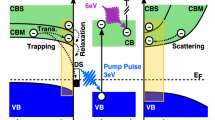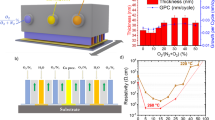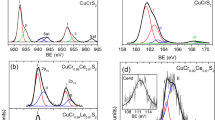Abstract
IT is a remarkable feature of electron conductivity that an insulating crystal becomes conducting so soon as one section of it is illuminated by active light. The same phenomenon was found both in the experiments of Kikoin and in our own investigation on multicrystalline cuprous oxide plates. At liquid air temperature the current between E and F (Fig. 1) increases a hundredfold if a small section, S1 S2, be illuminated. Thus not only have we a stream of electrons from the illuminated section to the anode, but necessarily a supplementary stream between the cathode and S1 S2 also; the latter must be ascribed to the movement of free holes in a fully occupied band of electron levels, which is equivalent to a stream of positive electrons.
This is a preview of subscription content, access via your institution
Access options
Subscribe to this journal
Receive 51 print issues and online access
$199.00 per year
only $3.90 per issue
Buy this article
- Purchase on Springer Link
- Instant access to full article PDF
Prices may be subject to local taxes which are calculated during checkout
Similar content being viewed by others
Author information
Authors and Affiliations
Rights and permissions
About this article
Cite this article
JOFFÉ, A., NASLEDOV, D. & NEMENOV, L. Behaviour of Electrons and Holes in Cuprous Oxide. Nature 132, 239–240 (1933). https://doi.org/10.1038/132239b0
Issue Date:
DOI: https://doi.org/10.1038/132239b0
Comments
By submitting a comment you agree to abide by our Terms and Community Guidelines. If you find something abusive or that does not comply with our terms or guidelines please flag it as inappropriate.



